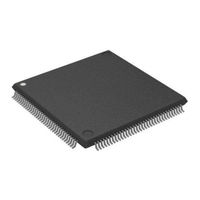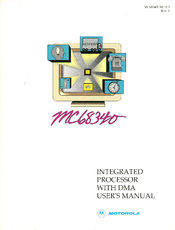Motorola MC68340 Integrated Processor Manuals
Manuals and User Guides for Motorola MC68340 Integrated Processor. We have 2 Motorola MC68340 Integrated Processor manuals available for free PDF download: User Manual
Motorola MC68340 User Manual (441 pages)
Integrated Processor with DMA
Brand: Motorola
|
Category: Computer Hardware
|
Size: 2 MB
Table of Contents
-
-
Organization27
-
Advantages27
-
Cpu3228
-
Physical33
-
-
Signal Index36
-
Address Bus38
-
Test Signals47
-
-
Read Cycle65
-
Write Cycle67
-
Bus Errors83
-
HALT Timing88
-
Bus Request92
-
Bus Grant92
-
Show Cycles93
-
-
Clock Control108
-
Low-Power Stop114
-
Freeze114
-
-
Overview138
-
Features139
-
Virtual Memory139
-
Addressing Modes142
-
Instruction Set142
-
Privilege States144
-
Registers147
-
Status Register147
-
Instruction Set148
-
New Instructions148
-
Condition Tests166
-
Table Example 3170
-
Privilege Levels174
-
-
Address Error179
-
Bus Error179
-
Format Error184
-
Tracing186
-
Interrupts187
-
Fault Recovery189
-
Types of Faults191
-
-
-
-
Enabling BDM202
-
-
-
CPU Serial Logic206
-
-
-
Command Set210
-
-
-
Future Commands224
-
-
MOVE Instruction238
-
Bus Arbitration268
-
Data Packing285
-
-
Operation303
-
Transmitter305
-
Receiver306
-
FIFO Stack307
-
Looping Modes309
-
Multidrop Mode310
-
-
Event Count358
-
Event Count Mode359
-
Timer Bypass360
-
Bus Operation361
-
Read Cycles361
-
Write Cycles361
-
-
Overview376
-
TAP Controller377
-
-
Extest (000)385
-
Hi-Z (100)386
-
-
Bypass Register386
-
-
Reset Circuitry390
-
-
SRAM Interface390
-
ROM Interface391
-
Serial Interface391
-
-
Mc68340V (3.3 V)400
-
-
Pin Assignment426
Advertisement
Motorola MC68340 User Manual (472 pages)
Integrated, with DMA

